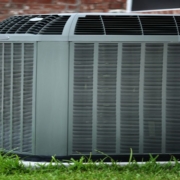Can an AC Run for 24 Hours? Debunking the Myth
In the scorching heat of summer, the idea of leaving your air conditioner running continuously for 24 hours is tempting. After all, who wouldn’t want to bask in the comfort of a cool, air-conditioned environment around the clock? However, despite the allure of uninterrupted cooling, the reality is far more complex than meets the eye.
Understanding the Myth
Many homeowners misunderstand that an AC can run nonstop for 24 hours without any adverse effects. While modern air conditioning systems are designed to withstand extended operation, several factors must be taken into account before adopting such a practice.
Factors Influencing AC Runtime
Size and Capacity of the AC Unit
One of the primary determinants of how long an AC can run continuously is its size and capacity. Oversized units may cycle on and off more frequently, leading to increased wear and tear, while undersized units may need help maintaining desired temperatures, resulting in constant operation.
Ambient Temperature and Climate
The ambient temperature and climate of the region also play a crucial role in determining the runtime of an AC. In hotter climates, where temperatures soar during the summer, AC units may need to run longer to maintain indoor comfort.
Insulation and Sealing of the Space
The insulation and sealing of the indoor space can significantly impact the efficiency of an air conditioning system. Well-insulated and tightly sealed areas require less energy to cool, allowing the AC to operate more efficiently and potentially reducing the need for continuous runtime.
Impact on Energy Consumption
Running an AC for 24 hours may provide continuous cooling, but it comes at a significant cost in energy consumption. Continuous operation can lead to higher electricity bills, especially during peak hours when energy rates are at their highest.
Maintenance and Wear & Tear
Continuous operation can also affect the maintenance and lifespan of the AC unit. Components such as filters, coils, and compressors may experience accelerated wear and tear, necessitating more frequent repairs and replacements.
Health and Comfort
In addition to impacting energy consumption and maintenance, continuous AC operation can also have implications for health and comfort. Poorly maintained AC systems can lead to issues such as indoor air pollution, humidity imbalance, and discomfort due to excessive cooling.
Alternatives to Continuous AC Operation
While continuous AC operation may seem like the only solution to combat the summer heat, several alternatives are worth considering. Implementing efficient cooling strategies, such as using ceiling fans, closing curtains during the day, and minimizing heat-generating activities, can help reduce the need for continuous AC operation.
Conclusion
In conclusion, while it is technically possible for an AC to run for 24 hours straight, it is only occasionally advisable or practical. Factors such as energy consumption, maintenance requirements, and personal comfort levels must be carefully considered before adopting such a practice. Homeowners can balance comfort, energy efficiency, and environmental responsibility by understanding the limitations of continuous AC operation and exploring alternative cooling strategies.
FAQs
1. Is it wrong to run my AC 24/7?
Running your AC continuously can lead to higher energy bills and increased wear and tear on the unit, potentially shortening its lifespan. It is advisable to use programmable thermostats to regulate cooling based on your needs.
2. Can running my AC all day cause health problems?
Continuous AC operation, especially in poorly maintained systems, can lead to indoor air pollution and discomfort. Regular maintenance and proper ventilation are essential to mitigate health risks.
3. Will run my AC nonstopnonstop cool my home faster?
While continuous operation may provide continuous cooling, it doesn’t necessarily cool your home faster. Oversized units may cycle on and off more frequently, leading to inefficient cooling and potential temperature fluctuations.
4. How can I reduce my AC’s energy consumption without turning it off?
Implementing energy-saving practices such as using ceiling fans, closing curtains during the day, and minimizing heat-generating activities can help reduce the need for continuous AC operation while maintaining indoor comfort.
5. What is the ideal temperature to set my AC for energy efficiency?
Setting your AC to a moderate temperature, typically around 78°F (25.5°C), can help balance energy efficiency and comfort. Adjustments can be made based on personal preferences and outdoor conditions.

